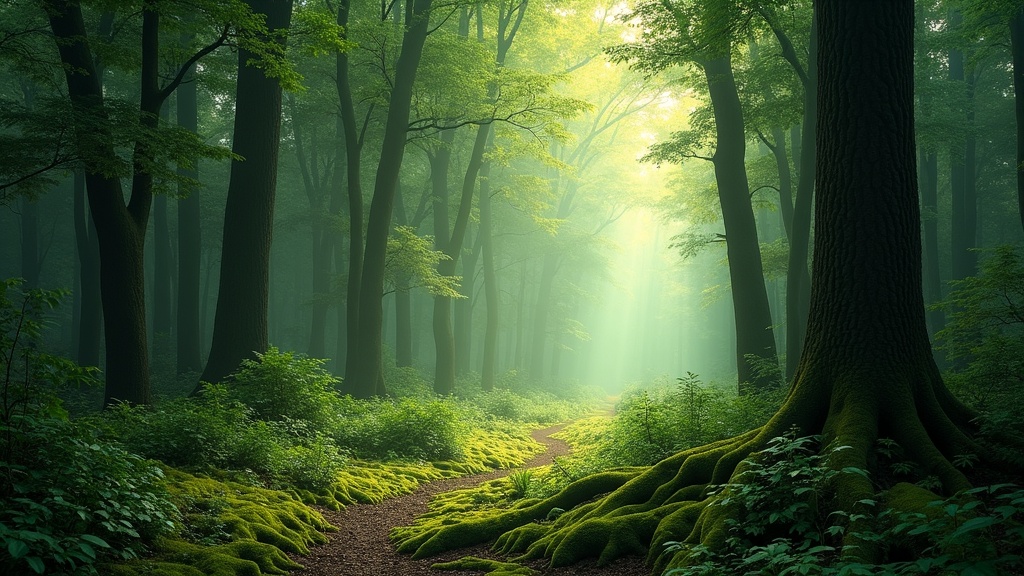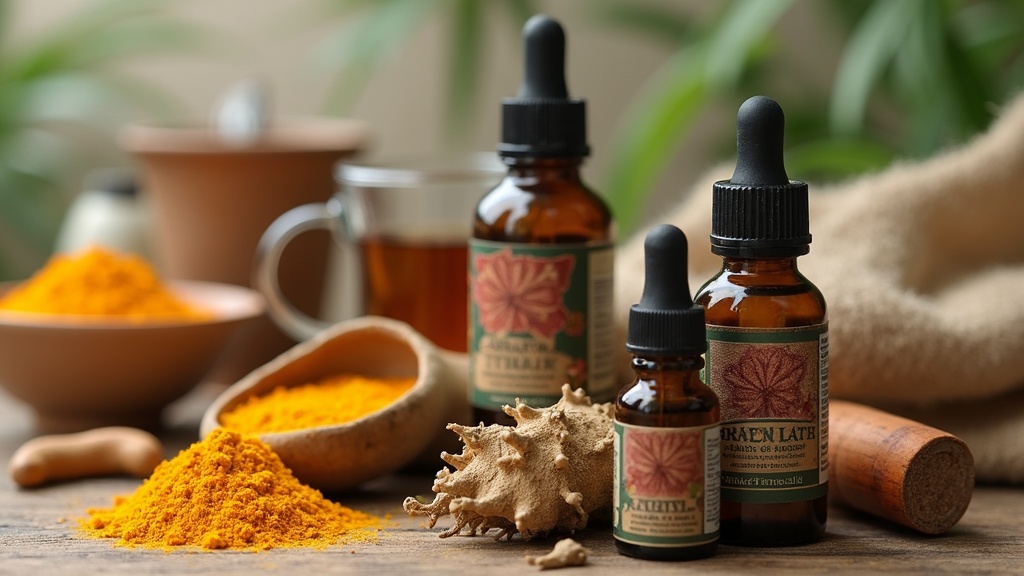Forest bathing is a practice rooted in slowing down and fully getting immersed in the natural world. I find it brings a real sense of calm and helps clear my head, especially when city life gets overwhelming. Stemming from Japan as “shinrin yoku,” it involves consciously spending time in a forest or natural setting, tuning into sights, sounds, and sensations. Unlike going on a hike for exercise, the focus with forest bathing is on being present rather than getting anywhere in particular.

Understanding Forest Bathing and Its Roots
Forest bathing came about in 1980s Japan as a way to address growing stress among city dwellers. While the idea of stepping into nature to relax isn’t new, giving it a name and purpose has helped people see it as a tool for better mental and physical health. Shinrin yoku has even been recommended by Japanese doctors as a stress-relief prescription; pretty wild compared to most medical advice, but it really works wonders.
I’ve tried forest bathing in a few parks near my home, and the switch in mood is almost immediate. Even a short walk under the trees brings my stress down, restores my focus, and gives me a gentle kind of energy that I just don’t get indoors. Interestingly, this practice is growing fast in other parts of the world too, as more folks look for slower, nature-powered ways to recharge.
Why Forest Bathing Matters for the Brain
Nature affects our brains in ways that science is still checking out, but the evidence so far looks pretty encouraging. Brain scans and hormone measurements show that forest environments:
- Lower cortisol (the stress hormone)
- Stabilize heart rate and blood pressure
- Boost activity in the parasympathetic nervous system (the system responsible for calm and recovery)
- Decrease activity in areas of the brain linked to anxiety and rumination
What’s happening here is partly about chemicals released by trees, known as phytoncides. When I breathe in the fresh scents of pine, cedar, or even leafy greens, my body is actually taking in these tiny molecules. They’re thought to give a boost to immune function while nudging the brain toward a peaceful, unfocused state. Nature also removes the overstimulation that comes from traffic, screens, and busy crowds, which helps neural pathways associated with calm attention grow stronger over time. Spending time in green spaces has also been shown to help young people with focus and lower anxiety levels, offering benefits for all ages.
Simple Steps to Try Forest Bathing
Forest bathing is honestly easier to get into than most hobbies or wellness routines. You don’t need expensive gear or skills—just an open mind and some unplugged time. Here’s how I usually approach it, with options for absolute beginners or those wanting to dig in deeper:
- Find a Green Spot: A forest is perfect, but any park, riverside path, or even a small grove with trees will do fine.
- Leave Your Tech Behind: Turn off your phone or set it to airplane mode. If you want to take photos, wait until your session ends.
- Walk Slowly: Your goal isn’t to hike far or get a workout. Move slowly, really immersing yourself in the environment.
- Pause Regularly: Stop to notice how sunlight filters through branches, the sound of birdsong, or the scent of damp earth. If you find a comfortable spot, sit and just pay attention.
- Breathe Deeply: Focus on your breath and the fresh air. Try counting your breaths or just let them slow on their own.
If you’re starting out, 10 to 20 minutes of quiet in the woods is a good introduction. As you practice more, you can stretch these periods longer or check out different green spaces for variety. Sometimes I pick a new trail just to see how the different scenery changes my mood.
Forest Bathing for Different Experience Levels
Trying forest bathing is open to just about everyone, but tweaking your approach to match your comfort and experience helps make it rewarding for all skill levels.
First-Timers
- Pick a small, familiar park or trail you feel safe exploring.
- Visit during daylight hours with clear weather.
- Set a timer—15 minutes is enough for a first session.
- Focus on your five senses: what do you see, hear, smell, feel, and maybe even taste in the air?
Intermediate Nature Lovers
- Try less-traveled local forests or bigger nature reserves.
- Bring a friend, but decide to be mostly quiet in nature.
- Try a sitting meditation or mindful wandering for up to an hour.
- Journal right after to keep up with changes in sensations and emotions.
Seasoned Forest Bathers
- Check out remote wilderness spots for a day or a weekend getaway.
- Experiment with guided forest therapy walks led by certified guides.
- Carry a sketchbook or sound recorder to capture details you spot.
- Try forest bathing at different times: mornings for crispness, evenings for quiet, or visit in all seasons for unique experiences.
Health Benefits of Forest Bathing
The benefits of forest bathing aren’t just a hunch—they’re backed by dozens of research studies. Spending quality time in nature has been linked to some impressive perks:
- Drops physical markers of stress (heart rate, blood pressure, and cortisol go down after as little as 20 minutes in the trees)
- Improves concentration and memory—rocking the “restorative effect” of green spaces
- Boosts mood and helps fight symptoms of depression and anxiety
- Gives a boost to the immune system thanks to natural tree compounds
- Encourages better sleep patterns and overall life satisfaction
People with chronic pain or cardiovascular problems have reported less discomfort and better recovery after regular forest bathing sessions. For me, bouncing back from daily stress feels easier, and friends of mine who try it have seen similar results, especially if they’re burnt out. Forest bathing also supports creativity and problem-solving by encouraging an unfocused, open state of mind—a real asset in today’s high-pressure lifestyle.
Common Obstacles and Simple Fixes
Getting into forest bathing can feel strange if you’re not used to quiet or don’t have easy access to big forests. Here are a few obstacles you might come across, and my go-to fixes:
- Missing Big Forests: City parks, botanical gardens, or even smaller wooded areas can offer many of the same benefits. The key is the sense of immersion, not the size of the woods.
- No Extra Time: Squeeze in micro-sessions of just 10 or 15 minutes in any nearby green spot during lunch breaks or weekends.
- Uneasy Silence: Try a mindfulness app or start with gentle background music or nature sounds. Over time, you may find yourself craving real silence.
- Unpredictable Weather: Dress for the season and carry a light rain jacket—you might even stumble upon that woods are especially calming on a misty or rainy day.
Keep in mind, going with a friend or joining a guided group can make things easier for beginners. Nature centers or local hiking groups sometimes offer group walks or mindful sessions for all ages and backgrounds.
Tips to Get the Most Out of Forest Bathing
Making forest bathing part of your routine, even once a week, can really make a difference. Here’s what helps me keep things fresh and meaningful:
Mix In Some Variety with Locations: Trying new parks or woodsy paths keeps you active in the moment. Every place has its own sounds, smells, and wildlife to track down.
Involve All Senses: Some days I’ll run my hands along rough bark, listen to distant water trickling, or close my eyes and breathe in that earthy smell—it all adds to the healing experience.
Forget Goals: There’s no need to track progress—sometimes the best days are when I just sit, listen, and let my thoughts wander.
Reflect Afterwards: Journaling a few notes about what I felt or noticed helps me notice patterns over time and boosts my appreciation of little details.
Frequently Asked Questions
Here are some questions people often ask me about forest bathing:
Question: How long do I have to spend in nature to benefit?
Answer: Just 20 minutes can lower stress hormones and improve your mood, but regular sessions of 40 to 60 minutes bring deeper payoffs like better focus and sleep.
Question: What if I live in a city with limited green areas?
Answer: Urban parks, gardens, and even treefilled streets work well. Quieter corners away from heavy traffic are better, but any greenery helps.
Question: Is forest bathing safe for everyone?
Answer: Most people can do it safely. If you have allergies or mobility concerns, pick an easy location and dress for the weather and conditions. Always check your comfort level before starting out.
Getting Started: Forest Bathing in Everyday Life
You can work forest bathing into your routine by walking through a greenway after work or setting aside part of your weekend to unwind in the trees. Sometimes I head to old trails—even near my grocery store—to soak in a little time with nature. Give yourself permission to truly slow down; don’t set goals, just notice how good it feels to be outside and let your mind wander.
As you try forest bathing more often, you’ll likely track down what works for you. Whether you go solo or join a guided group, the main thing is to leave your schedule behind and spend some quality time outdoors. Whether you have a sprawling forest or just a pocket park, time in nature can bring surprising peace and focus into your life.


